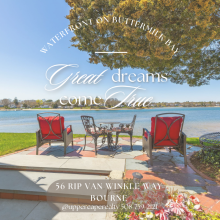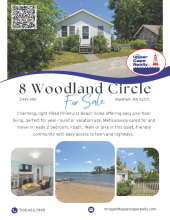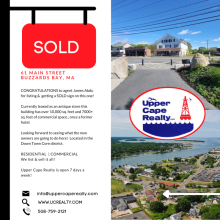Fact-checking Marion’s windfall
The business of fact-checking has certainly been booming in recent months, not only in our national election but also here in our own local community. Unfounded misinformation is easy to generate and proliferate, so it is increasingly important for each of us to question conflicting statements and make informed decisions based on facts.
Here we fact-check two recent letters to the editor and correct several misstatements, supported with authoritative sources of information.
Massachusetts state incentives to fund renewable energy projects come not from tax dollars (as misstated by Mr. [Ted] North), but from fees on our electric bills. See for yourself: On the second page of your electric bill, look under the heading “Cost of Electricity” and you’ll see a charge called “Renewable Energy.” Read about the program online (see #1, below). We are all contributing to this fund, and many communities and individuals are already reaping the benefits of solar- and wind-generated electricity. In the case of Marion’s purchase of power from the Future Generation Wind project in Plymouth, we receive a 20 percent discount on the electricity in addition to reducing our reliance on fossil fuels. The town receives this cost reduction in the form of cash payments from Eversource. If something should happen to the project or program, the worst-case scenario is that Marion would revert to paying the electric rates it paid before. These “windfall” funds could be reinvested in further energy-efficiency projects to save the town even more money. This is the proposal that the Energy Management Committee hopes the town will approve in Article #5 at Town Meeting. Any uses of these funds would require approval by Selectmen, the Finance Committee, and/or town meeting (contrary to the misstatement by Mr. North).
The incentive programs that paid for Marion’s four leased electric cars and purchased charging stations were funded not by tax dollars (another error by Mr. North), but rather from fees on vehicle inspections. This information comes straight from Ms. Sejal Shah, director of the program (2). Once again, we all pay these fees – shouldn’t we also benefit from them? At the end of the leases, the EMC proposes to use some of the windfall funds to re-lease or replace the electric cars.
For many decades, the electricity used by Massachusetts residents has been generated largely (about 80 percent) by burning fossil fuels. People living near power plants – such as those in Sandwich and Fall River – have had to put up with views of smokestacks and plumes of toxic fumes from these plants so that we all could benefit from the electrical output. It would be interesting to hear the response of these folks to last week’s letter by Ms. Stamos, in which she complained about the whoosh of a wind turbine occasionally heard over the background traffic noise from Route 25. She claimed that construction equipment damaged Bourne’s roads, even though the loads heeded state regulations. “Strobing” is impossible in the community she mentions, as the homes are located south of all the turbines, and thus the blades cannot pass between them and the sun.
Thanks to foresighted leaders in our state and despite these efforts to misinform, Massachusetts is transitioning toward renewable energy sources. Marion’s Energy Management Committee is embracing this transition. We hope our residents will arm themselves with facts, not fantasy, and vote for Article #5 at Town Meeting on Oct. 24.
Jennifer Francis on behalf of the EMC
1. http://energy.gov/savings/renewable-energy-trust-fund
2. http://www.mass.gov/eea/agencies/massdep/air/grants/massevip.html










